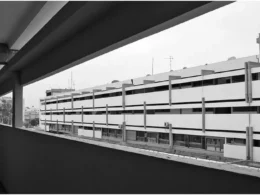Embarking on a career in architecture in Morocco is a journey that blends creativity, technical proficiency, and a deep understanding of cultural contexts. This guide outlines the steps to pursue an architecture career in Morocco, highlighting key educational institutions, essential tools for students, emotional preparations, recommended pre-university courses, and the contrast between expectations and reality.
Table of Contents
Educational Pathways in Architecture
Morocco offers several esteemed institutions for architectural studies, each with unique programs and specializations:
- École Nationale d’Architecture de Rabat (ENA Rabat): The first and most prestigious architecture school in Morocco, offering a comprehensive program that balances theoretical knowledge with practical training.
- École Nationale d’Architecture de Tétouan (ENAT): Established to cater to the northern regions, focusing on local cultural and environmental considerations in design.
- School of Architecture, Planning & Design (SAP+D) at Université Mohammed VI Polytechnique: A forward-thinking institution emphasizing innovation and sustainable urban development.
- Higher School of Architecture of Rabat at Université Internationale de Rabat (UIR): Offers a rigorous academic curriculum in architecture and urban planning.
- École d’Architecture at Université Internationale de Casablanca (UIC): Located in the heart of Casablanca, focusing on multidisciplinary approaches to architectural design.
Essential Tools for Architecture Students
Equipping yourself with the right tools is crucial for success in architectural studies. Key items include:
- Drawing Supplies: High-quality pencils, pens, sketchbooks, and drafting tools.
- Digital Tools: Proficiency in software such as AutoCAD, Revit, SketchUp, and Adobe Creative Suite.
- Model-Making Materials: Foam boards, cardboard, cutting tools, and adhesives.
- Measuring Instruments: Measuring tapes, rulers, and distance meters.
Emotional Preparation
Pursuing a career in architecture is both rewarding and demanding. Emotional readiness involves:
- Resilience: The iterative nature of design requires the ability to accept and learn from critiques.
- Time Management: Balancing multiple projects and deadlines requires effective organizational skills.
- Passion and Curiosity: A genuine interest in architecture and continuous learning are key to long-term success.
- Collaboration: Working effectively in teams is integral to the architectural process.
Recommended Pre-University Courses
Building a strong foundation before entering an architecture program can enhance your academic experience. Consider focusing on:
- Mathematics and Physics: Essential for understanding structural principles and material behaviors.
- Art and Design: Developing skills in drawing, sculpture, and visual design fosters creativity.
- History and Social Studies: Helps inform design decisions through cultural and historical insights.
- Computer Science: Familiarity with digital tools and software prepares you for modern architectural practice.
Expectations vs. Reality
Many aspiring architects enter the field with specific expectations that may not always align with reality. Here’s a breakdown:
- Expectation: Architecture is all about creativity and designing beautiful buildings.
- Reality: While creativity is a core aspect, a significant part of the job involves technical details, legal regulations, and structural calculations.
- Expectation: Architecture students will have plenty of free time to explore artistic ideas.
- Reality: The workload is intense, with tight deadlines, sleepless nights, and constant revisions.
- Expectation: A degree in architecture guarantees immediate success and well-paid jobs.
- Reality: The job market is competitive, and gaining experience through internships and networking is essential before landing a stable position.
- Expectation: Architects work independently on large projects.
- Reality: Architecture is a highly collaborative profession, requiring teamwork with engineers, clients, urban planners, and other professionals.
Embarking on an architecture career in Morocco involves formal education, practical skill development, emotional preparedness, and a commitment to continuous learning. By understanding both the expectations and realities of the field, students can make informed decisions and set themselves up for success in the architectural world.













How do Art and Design courses contribute to a student’s preparation for an architecture program? Visit us Sistem Informasi Akuntansi